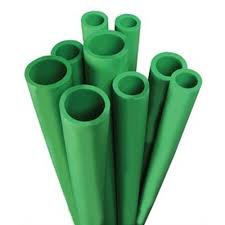Aug . 12, 2024 17:52 Back to list
Understanding the Applications and Advantages of PPR Pipes for Hot and Cold Water Systems
PPR Pipes for Hot and Cold Water Applications in Factories
In modern industrial settings, efficient water management is critical for smooth operations. One of the keys to achieving this is the use of high-quality piping systems. Among the various options available on the market, Polypropylene Random Copolymer (PPR) pipes have emerged as a preferred choice for transporting both hot and cold water in factories. This article explores the advantages of PPR pipes, their applications, and the reasons behind their growing popularity in industrial environments.
Understanding PPR Pipes
PPR pipes are made from a durable thermoplastic material known as Polypropylene, specifically its random copolymer variant. The versatility of PPR pipes allows them to withstand a variety of conditions, making them suitable for transporting fluids at different temperatures, including both hot and cold water. This characteristic is particularly beneficial in industrial settings where temperature variations are common due to operational processes.
Advantages of PPR Pipes
1. Temperature Resistance One of the standout features of PPR pipes is their ability to handle high temperatures. They can typically withstand temperatures as high as 95°C (203°F), making them ideal for hot water applications. In contrast, they also perform well in cold water systems, offering versatility across different operational needs.
2. Corrosion Resistance Unlike traditional metal pipes, PPR pipes are not susceptible to corrosion or rust. This characteristic extends their lifespan significantly and reduces maintenance costs over time. In industrial environments where chemical exposure can be common, PPR’s resistance to a wide range of chemicals further enhances its reliability.
3. Lightweight and Easy to Install PPR pipes are considerably lighter than metal alternatives, which simplifies transportation and installation. Their lightweight nature allows for easier handling, and the installation process is typically faster, resulting in lower labor costs for factories.
ppr pipe for hot and cold water factories

4. Low Thermal Conductivity PPR pipes have low thermal conductivity, which means they can maintain the desired water temperature for longer periods. This property is crucial in energy-efficient designs and helps in minimizing heat loss in hot water systems.
5. Eco-Friendly PPR material is recyclable, making it an environmentally friendly option for industrial applications. In an era where sustainability is paramount, using PPR pipes aligns with eco-conscious practices in various manufacturing processes.
Applications in Factories
PPR pipes find extensive applications in various sectors, including food processing, pharmaceuticals, chemicals, and textile manufacturing. They are utilized for
- Hot and Cold Water Distribution Whether for process water, cooling systems, or domestic uses within factory premises, PPR pipes effectively manage both hot and cold water flows. - Chemical Transport Due to their corrosion resistance, PPR pipes are ideal for handling different chemicals safely, ensuring that production processes remain uninterrupted.
- Heating Systems They are also employed in heating applications, such as underfloor heating and radiators, owing to their durability under high-temperature conditions.
Conclusion
The choice of piping material can significantly impact the efficiency and reliability of water management systems in factories. PPR pipes, with their impressive temperature tolerance, corrosion resistance, and lightweight properties, are becoming increasingly popular in diverse industrial applications. As industries continue to evolve and prioritize efficiency and sustainability, the demand for PPR pipes is set to grow. Their role in facilitating both hot and cold water transport showcases a blend of practicality and innovation that modern factories require in today’s competitive landscape.
-
DN100 PVC Pipes for Well Casings - Durable & Corrosion-Resistant
NewsAug.22,2025
-
HORON 25mm PPR Plumbing Pipes: Durable, Reliable & Leak-Proof
NewsAug.21,2025
-
32mm HDPE Pipes in Coil: Flexible & Durable Water Supply
NewsAug.19,2025
-
Flexible 32mm HDPE Pipes in Coil - Durable & Easy Install
NewsAug.18,2025
-
HDPE Sprinkler Pipe Manufacturers - Quality & Durable Solutions
NewsAug.17,2025
-
Durable DN100 PVC Well Casing Pipes for Reliable Water Supply
NewsAug.16,2025

